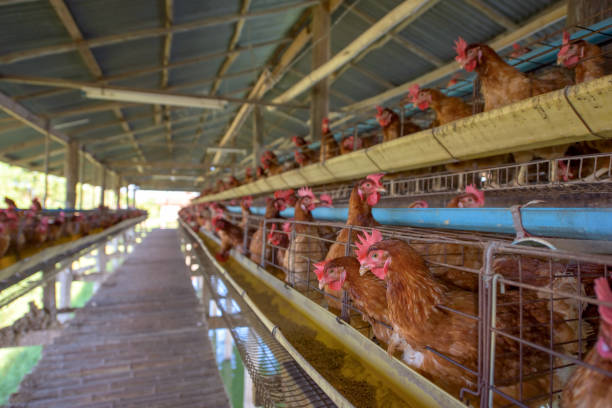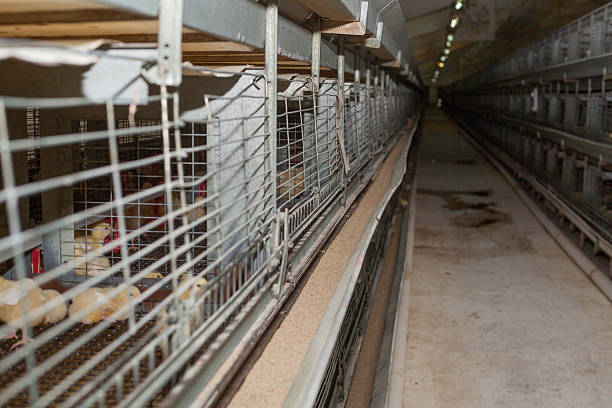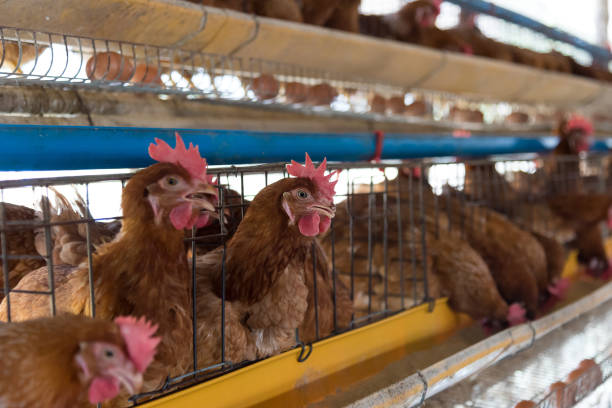Battery Cage Systems for Zambian Chicken Farms: A Comprehensive Guide
Battery Cage Systems for Zambian Chicken Farms: A Comprehensive Guide
For Zambian poultry farmers looking to maximize egg production and streamline their operations, battery cage systems have become an increasingly popular choice. These systems offer a controlled environment, improved hygiene, and efficient management of laying hens, leading to potentially higher yields and profitability. However, understanding the nuances of battery cage systems is crucial for making informed decisions. This comprehensive guide aims to equip Zambian chicken farmers with the knowledge they need to evaluate and implement battery cage systems effectively.
What are Battery Cage Systems?
Battery cage systems are a type of housing for laying hens where multiple birds are kept in small wire mesh cages within a larger structure. These cages are typically arranged in rows and tiers, maximizing space utilization within the poultry house. The systems are designed to provide hens with access to food and water, while facilitating egg collection and waste removal.
Benefits of Using Battery Cage Systems in Zambia
Increased Egg Production: Battery cages provide a controlled environment, minimizing stress factors and optimizing conditions for egg laying. Factors like temperature, lighting, and ventilation can be precisely managed, leading to consistent and higher egg production rates. Reduced egg breakage is another benefit of an enclosed cage system.
Improved Hygiene and Disease Control: The design of battery cages facilitates easy cleaning and disinfection, reducing the risk of disease outbreaks. Waste is collected separately from the hens, minimizing contact with manure and improving overall hygiene within the poultry house. This in turn reduces reliance on preventative antibiotics, making for healthier hens and safer end products.
Efficient Space Utilization: Battery cage systems maximize the number of hens that can be housed in a given area. This is particularly beneficial for farmers with limited land resources. The tiered arrangement of cages allows for intensive stocking, increasing the overall efficiency of the poultry operation.
Simplified Management: Battery cage systems streamline many aspects of poultry management. Automated feeding and watering systems reduce labor requirements. Egg collection is also simplified, often through automated conveyor belts that minimize handling and improve egg quality.
Reduced Labor Costs: Automation features like automatic feeding, watering, egg collection, and manure removal can significantly reduce the labor required to manage a large flock. This is especially important in Zambia, where labor costs can be a significant expense for poultry farmers.
Types of Battery Cage Systems Available in Zambia
A-Frame Cages: These are the most common type of battery cage, characterized by their A-shaped structure. They are relatively inexpensive and easy to install, making them a popular choice for small to medium-sized farms.
H-Frame Cages: H-frame cages are more sophisticated systems that offer improved ventilation and manure management compared to A-frame cages. They are typically used in larger poultry operations due to their higher initial cost.
Flat Deck Cages: Flat deck cages consist of multiple tiers of cages stacked on top of each other. They offer excellent space utilization but can be more challenging to manage due to the height of the system.
Manure Removal Systems: Critical component of a battery cage. Options available for manure removal, including automatic manure scrapers, belt removal systems, and deep pit systems. The type of system chosen will depend on the size of the farm and the desired level of automation.
Factors to Consider When Choosing a Battery Cage System
Flock Size: The size of the farm will heavily influence the choice of battery cage system. Smaller farms may opt for simpler, more affordable A-frame cages, while larger farms may benefit from the efficiency and automation of H-frame or flat deck cages.
Budget: Battery cage systems can be a significant investment. Farmers should carefully consider their budget and choose a system that offers the best value for money.
Climate: Zambia’s climate can be challenging for poultry farming. Farmers should choose a battery cage system that is well-ventilated and can be easily adapted to control temperature and humidity.
Labor Availability: If labor is scarce or expensive, farmers should consider systems with automated feeding, watering, and egg collection features.
Local Regulations: It’s very important to check whether the intended battery cage system complies with Zambian regulations regarding animal welfare and environmental protection.
Maintenance and Repair: Farmers should choose a system that is easy to maintain and repair. Availability of spare parts and technical support is also a critical consideration.
Material quality: The quality of materials used in the cages matters. Galvanized steel cages hold off rust, preventing the spread of disease in your chicken flock.
Durability A long-lasting product saves money and trouble. Assess system construction to ensure they will endure the rigors of farm life.
Installation and Maintenance of Battery Cage Systems
Site Preparation: Before installing a battery cage system, it is essential to prepare the site properly. This includes ensuring that the ground is level and that there is adequate drainage.
Assembly: Battery cage systems typically come in prefabricated sections that need to be assembled on-site. Farmers should follow the manufacturer’s instructions carefully to ensure that the system is assembled correctly.
Electrical and Plumbing: Automated feeding, watering, and egg collection systems require electrical and plumbing connections. Farmers should ensure that these connections are installed by qualified professionals.
Regular Cleaning: Battery cage systems should be cleaned regularly to prevent the buildup of manure and reduce the risk of disease outbreaks.
Preventive Maintenance: Regular maintenance, such as lubricating moving parts and checking for wear and tear, can extend the lifespan of the battery cage system.
Addressing Problems Promptly: Addressing minor issues right away before they become major obstacles can avoid expensive repairs.
Sourcing Battery Cage Systems in Zambia
Several poultry equipment suppliers in Zambia offer battery cage systems. Farmers should research different suppliers and compare prices, features, and after-sales support before making a purchase. Consider these factors:
Reputation: Choose a supplier with a good reputation for quality products and reliable service.
Experience: Select a supplier with experience in installing battery cage systems in Zambia.
Warranty: Ensure that the supplier offers a warranty on their products.
Local Support: Choose a supplier with local presence and technical support to ensure prompt assistance with installation, maintenance, and repairs.
Customer Reviews: Look at comments and testimonials from other farmers about various suppliers to help you make an informed decision.
Cost Analysis of Battery Cage Systems
The cost of a battery cage system varies depending on the size of the farm, the type of system chosen, and the level of automation. Farmers should carefully analyze the costs and benefits of different systems before making a decision.
Initial Investment: The initial cost includes the purchase price of the cages, feeding and watering systems, egg collection system, manure removal system, and installation costs.
Operating Costs: Operating costs include electricity, water, feed, labor, and maintenance.
Return on Investment: Farmers should calculate the return on investment (ROI) for different systems to determine which option is the most profitable.
Addressing Animal Welfare Concerns
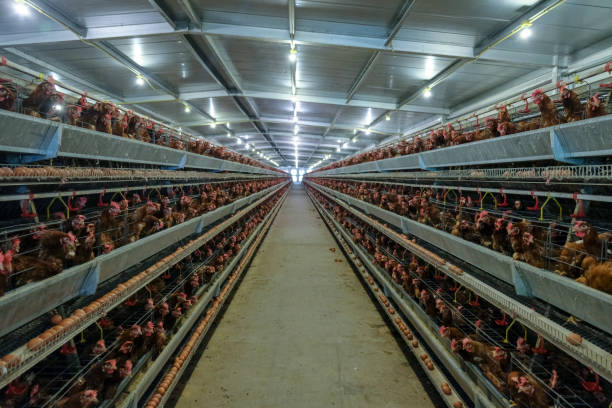
Battery cage systems have been criticized for their impact on animal welfare. However, modern cage systems are designed to address some of these concerns.
Cage Size: Ensure that the cages are large enough to allow hens to stand, turn around, and stretch their wings.
Enrichment: Provide hens with enrichment items, such as perches, dust baths, and scratching areas, to promote natural behaviors.
Lighting: Use appropriate lighting programs to encourage natural sleep-wake cycles.
Ventilation: Ensure adequate ventilation to maintain a comfortable temperature and reduce the buildup of ammonia.
Training: Properly train farm staff on animal handling techniques to minimize stress and injury to hens.
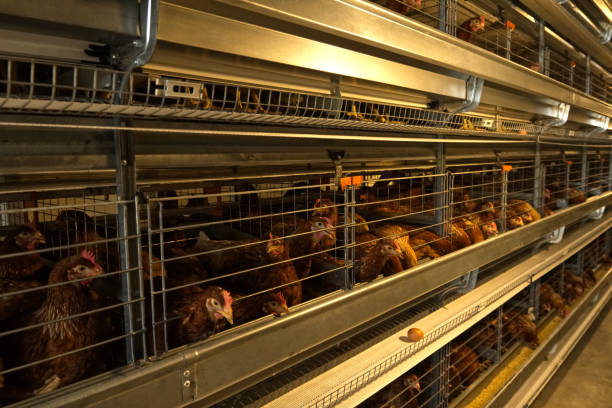
Integrating Battery Cage Systems with Other Farm Operations
Battery cage systems can be integrated with other farm operations to create a more sustainable and profitable poultry operation.
Manure Management: Manure collected from battery cage systems can be used as fertilizer for crops.
Renewable Energy: Solar panels can be used to power the battery cage system, reducing energy costs and environmental impact.
Integrated Farming: Poultry farming can be integrated with other agricultural activities, such as crop production and livestock farming, to create a more diversified and resilient farm.
The Future of Battery Cage Systems in Zambia
The poultry industry in Zambia is growing rapidly, and battery cage systems are likely to remain a popular choice for egg production. However, there is increasing pressure to improve animal welfare standards. Farmers should stay informed about the latest developments in battery cage technology and best practices for animal husbandry. They should also be prepared to adapt their systems to meet evolving consumer demands and regulatory requirements.
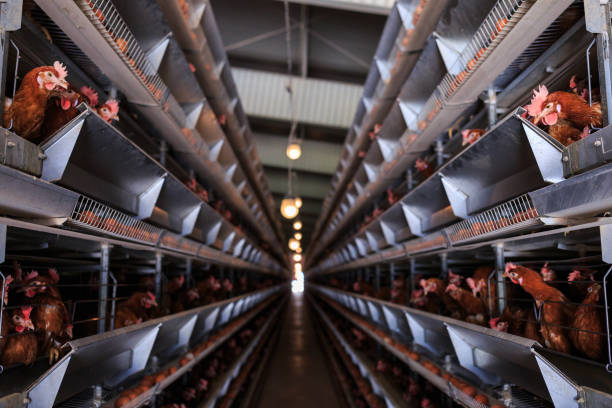
Conclusion
Battery cage systems offer numerous benefits for Zambian chicken farmers, including increased egg production, improved hygiene, efficient space utilization, and simplified management. By carefully considering the factors outlined in this guide, Zambian farmers can make informed decisions about selecting, installing, and managing battery cage systems that are both profitable and sustainable. With proper planning and management, battery cage systems can contribute significantly to the growth and development of the poultry industry in Zambia, while ensuring the well-being of the laying hens. Remember that success hinges on embracing innovation, prioritizing animal welfare, and adapting to the evolving landscape of the poultry industry.



